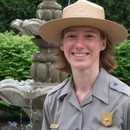How the National Park Service Leverages Webcams
The 63 national parks scattered across the country are home to more than 200 webcams. The cameras provide a variety of features for the park service and to citizens. The NPS has been using webcams since 1998, when the first was deployed at Great Smoky Mountains National Park, one of 20 national parks that are part of the National Park Service Air Quality Webcam network, according to Richardson.
Users can watch feeds from webcams to see Old Faithful erupt, catch glimpses of bald eagles and even just check to see how heavy the traffic is at park entrances, she notes.
“Many parks are displaying webcams from friends groups and other partners,” Richardson says.
One of those partners is Explore.org, a philanthropic media organization founded by Charles Annenberg Weingarten, who “believes that people will protect what they care about,” says Candice Rusch, director of new media for Explore.org. The organization operates live webcams around the world, making a wide range of natural landscapes available to the public.
“He thought if you could bring these animals into people’s homes, then you could inspire people to care about them,” she says.
Explore.org provides technical support and knowledge to the NPS, Rusch says, and the park service provides the access to the natural resources under its care.
MORE FROM FEDTECH: Popular webcams allow public to peer into inaccessible federal facilities.
Cameras Make Nature Accessible to the Masses
Cameras in Katmai operate from around mid-June through as far into the fall as Explore.org can help operate them, according to Rusch.
Explore.org mostly uses cameras from Axis or Sony, Rusch says, but a new generation of rugged 4K cameras are coming onto the market that will likely replace older models.
The NPS works closely with Explore.org to make sure the cameras in the park stay online. “In this year, especially during COVID-19, we really needed more local support than we usually do,” Rusch says.
The NPS’ Kraft notes that it’s technically challenging to keep cameras in the park online, since there often isn’t access to electricity or the internet in many parts of the park. “For park headquarters, we have a couple of T1 lines that run into the office, and it works most days,” she says. “When we are doing live chats, they’ll need to shut down some of the cams or ask the camera operators to pause in order to have the bandwidth.”
In the next year, Explore.org plans to upgrade the network infrastructure in Katmai to aid the operation of the webcams.












